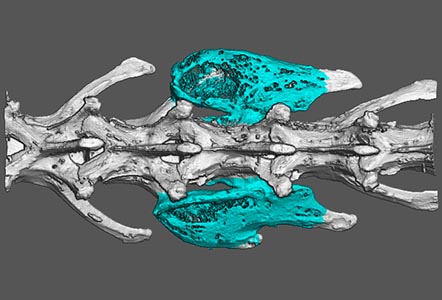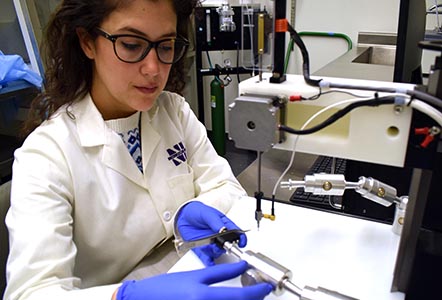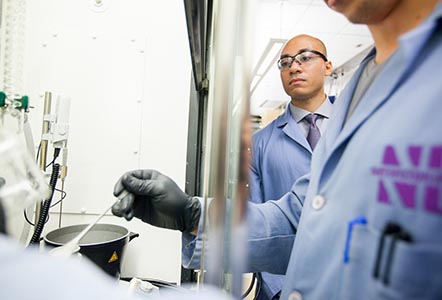
A CRN Catalyst Award project to explore biomimetic nanoparticles as a treatment for spinocerebellar ataxia type 1 (SCA1) helped principal investigator Puneet Opal land subsequent grants from the National Institute of Neurological Disorders and Stroke (NINDS) totaling $4.5 million.

One of the goals of the CRN is to provide resources to scientists looking to translate their discoveries into real-world technologies. Leveraging these benefits, the laboratories of Samuel Stupp and Erin and Wellington Hsu performed important early stage research to demonstrate the potential of using a synthetic peptide amphiphile (PA) nanofiber scaffold for spinal fusion.

Zaida Alvarez has leveraged the opportunities offered by the CRN as much as any graduate student or postdoctoral researcher since the center was founded. She has coauthored 11 publications related to CRN projects, culminating in the development of a novel therapeutic candidate for spinal cord injury that has generated coverage from hundreds of media outlets worldwide.

A CRN Catalyst Award enabled Evan Scott's laboratory to demonstrate that altering the size, shape and structure of nanomaterials can significantly enhance their targeted delivery of imaging agents and therapeutics to critical components of the immune system that contribute to atherosclerosis.

Using CRN funding, researchers in the Stupp group reconfigured a liquid bioactive nanofiber into a putty with improved surgical handling properties. This new formulation was key in attracting a gift from Michael and Mary Sue Shannon and forming collaborations with researchers from the University of Wisconsin, Mayo Clinic and the Steadman Philippon Research Institute to initiate translational studies for cartilage regeneration in large animals.





